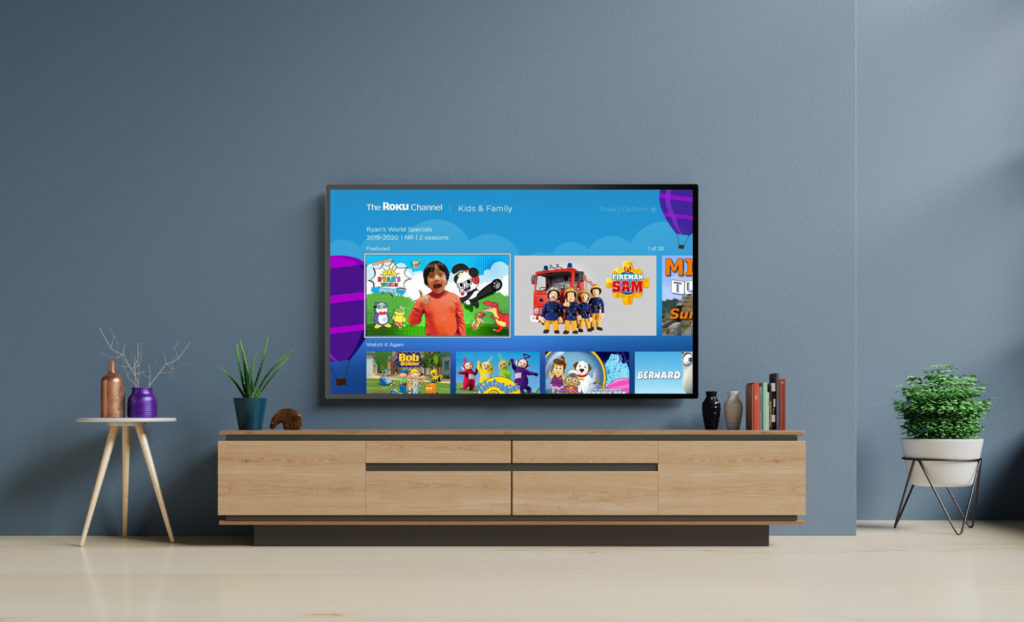By Patrick Morrell, Director of Strategic Publisher and TV Development at The Trade Desk
In its relatively short lifetime, streaming has rapidly become big business. By some estimates, the industry is worth nearly $26 billion as of 2020, with over 1 billion users across the globe subscribing to some kind of streaming platform.
News headlines often focus on the biggest, fastest-growing, or most recently-launched platform – and you can quite understand why. But as all eyes focus on the big players battling for consumer eyeballs with their billion-dollar blockbusters, we’re not getting the whole story.
Indeed, look beyond the headlines and it’s soon apparent that there are many other players at work – smaller streamers and crafty aggregators sneaking up on the side lines – and while they might not have seven figure production budgets, this doesn’t mean they should be overlooked. Roku’s recently launched streaming service, for example, is seen by some as the one to watch, despite not creating any original content of its own.
Small but mighty
Why? Whilst audiences on these platforms may be comparatively smaller than the biggest players, they often cater to a highly devoted niche of consumers – be it Sci-Fi stans, Anime aficionados, or something a lot more global. Roku offers an extensive range of international media outside of countries of origin – be it Greek news, Brazilian soap operas, or Romanian crime series.
So, despite their size, these platforms offer brands unique access to niche pools of potential customers that are traditionally harder to reach elsewhere. And what’s more, these specific audiences are not only much more easily reachable, they’re also far more engaged.
In the majority of cases, consumers will have very deliberately set out to find and watch content on these platforms. For example, if someone chooses to watch Pluto TV’s ‘Motor’ channel, it seems a pretty safe bet that they’re a car enthusiast.
An enjoyable ad break
And so, it follows that if said consumer is interested and engaged with whatever niche TV content it happens to be, they’re also much more likely to be interested and engaged with the advertising content too. This provides advertisers with a valuable opportunity to reach specific audiences through one of the most powerful advertising channels.
Instead of allocating large sums of cash to serve an ad for a luxury car that is only relevant to 0.01% of the millions of viewers on mainstream TV, channels like Pluto’s ‘Motor’ enables that car brand to reach its target audience in a highly primed and engaged state
A happy balance
But beyond all that, these niche services play a vital role in the wider industry. They fill a gap in the market that the monoliths aren’t capitalising on and in doing so, maintain balance in the ecosystem. Much in the way that nobody only wants to be able to visit a couple of websites online – regardless of how much great content they host – consumers seek a wide variety of great TV content.
For the consumer, this variety is beneficial both for the variety of content – and for their wallets, which for many, is more important than ever before. This in turn is good news for advertisers and content creators alike.
A lesson to be learned
There’s a powerful lesson for the streaming giants in this: creating flashy, expensive content that theoretically caters to just about everyone will take you far – but only so far. Past that point, data is the crucial point of differentiation that will take you further. The big players would benefit from taking a leaf out of the niche platforms’ book and using data to really get to know their own audience base. Rakuten is a prime example of this – it uses data to understand what local markets are interested in viewing and tailors its content library accordingly.
With ever-growing numbers of players entering the market – Quibi being the latest – it’s more important than ever for streaming platforms to understand their audiences – what content they want, and how they want it. Our research found that 60% of UK consumers will pay a maximum of £20 a month for streaming services, and a similar number (59%) would accept advertising on these platforms in exchange for a free subscription.
In the current uncertainty, consumer purse strings are tightening, and it’s only a matter of time before we see some of the big players forced to introduce advertising to fund their content and bolster revenues. And when that time comes, consumers won’t react kindly to badly targeted, irrelevant advertising.
It’s time for the big players to learn a lesson from their smaller counterparts about the power of smart, data-driven advertising – lest consumers channel-hop right on over to a competitor or switch off altogether.









